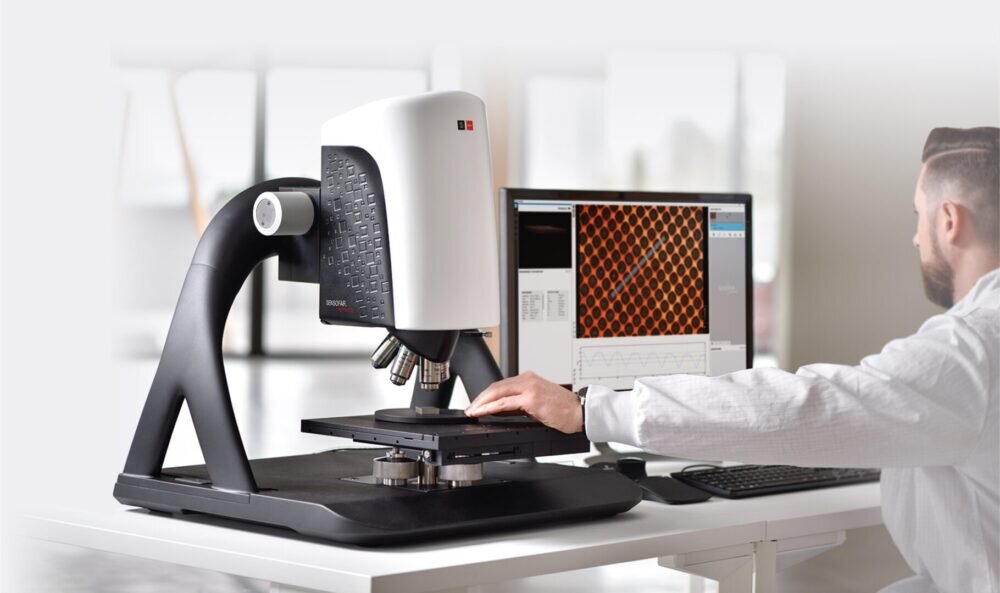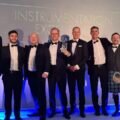~ The benefits of interferometry during optical profiling ~
Surface characteristics can determine a range of scenarios. For instance, the finish on the body of a Formula 1 car can influence the racer’s finish time, and an engineered part’s surface will help influence its performance. Here Matt Parry, applications engineer at industrial metrology specialist The Sempre Group, speaks to Natalia Bermejo, product specialist at Sensofar, about how manufacturers can benefit from optical profiling in research and development (R&D) applications.
F1 racing cars are designed to provide the best airflow and aerodynamics possible to improve performance on the track. While the shape of the car will impact aerodynamics the most, the look of the car also plays a part. If car manufacturers apply paint with the wrong texture or apply layers incorrectly to create an uneven surface, it can negatively impact aerodynamics. Similarly, the surface of a component is integral to how the part will interact with its environment — it can influence component behaviour on both a micro and nanoscale.
The surface determines some of the component’s main functionalities: adhesivity, contact resistance, biological compatibility, friction, mechanical wear. So, when developing a product, engineers can predict how it will behave by studying its surface.
Surface measurement
To ensure parts meet their intended purpose, manufacturers will often measure surface finish during development, allowing them to adapt manufacturing techniques accordingly before mass production.
Choosing the right measurement tools is vital at this stage — using probes that touch the object could compromise the surface. Optical profiling is therefore the most common choice when checking surface finish. Unlike other methods of measurement, where manufacturers might use a sample for surface measurement, manufacturers can use optical tools on the component itself because it is not invasive.
Interferometry
Even minor irregularities in surface finish can impact part performance — therefore manufacturers need to use a tool that measures surface finish to the nanometre. The Sensofar 3D optical surface profiler, for example, uses interferometry techniques for areal surface characterisation, as well as an optical design that makes it possible to double the field of view without compromising the resolution. By using a combination of Phase Shifting interferometry (PSI), Extended Phase Shifting Interferometry (ePSI) and Coherence Scanning Interferometry (CSI) techniques, manufacturers can use the profiler to measure a range of surface characteristics.
PSI is best for ultra-smooth and very flat, continuous surfaces, such as those on optical components. CSI is the most versatile mode, measuring smooth and rough surfaces with 1 nm resolution, and can also measure transparent layers with thicknesses from 1.5 to 100 microns. Meanwhile, ePSI which can be understood as a combination of PSI and CSI, is used for measuring smooth surfaces with structures, making it perfect for measuring features on wafers.
Interferometry has a high level of repeatability and accuracy and is faster than some confocal technologies, like laser confocals. By using this technique, engineers can produce topographies with a high number of measured data points, clearly showing the surface of intricate components.
While the paint on an F1 car will not be the determining factor on where a racer places, how manufacturers finish the car can impact its performance. Similarly, when developing a critical component, surface finish matters. The surface finish can affect how the part performs, its lifespan and how it interacts with other components. By using optical profiling techniques that are sensitive to surface topography and measure to the nanometre, manufacturers can ensure precision without risking damage to the component, delivering high quality, accurate parts.
For more information about optical profiling and its benefits, visit www.TheSempreGroup.com/optical-non-contact.





